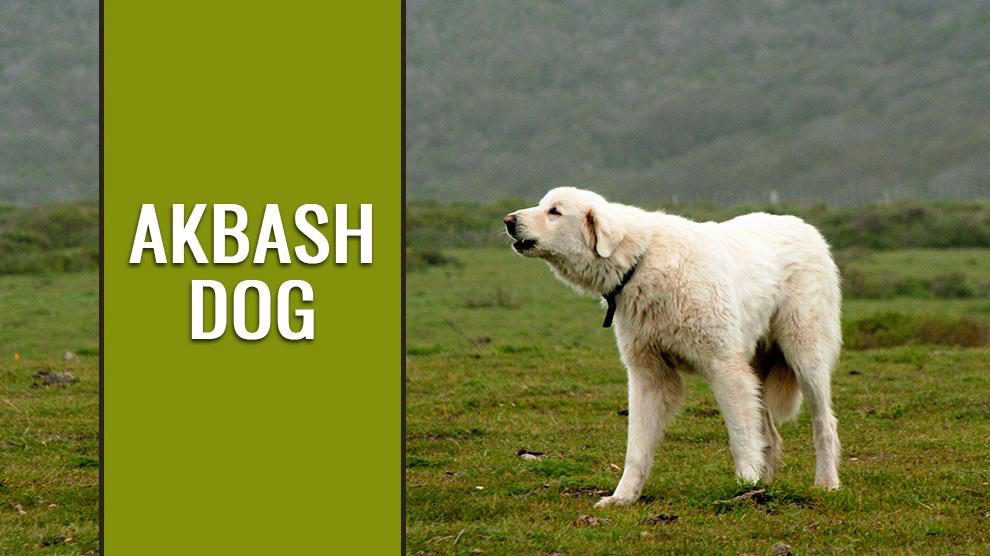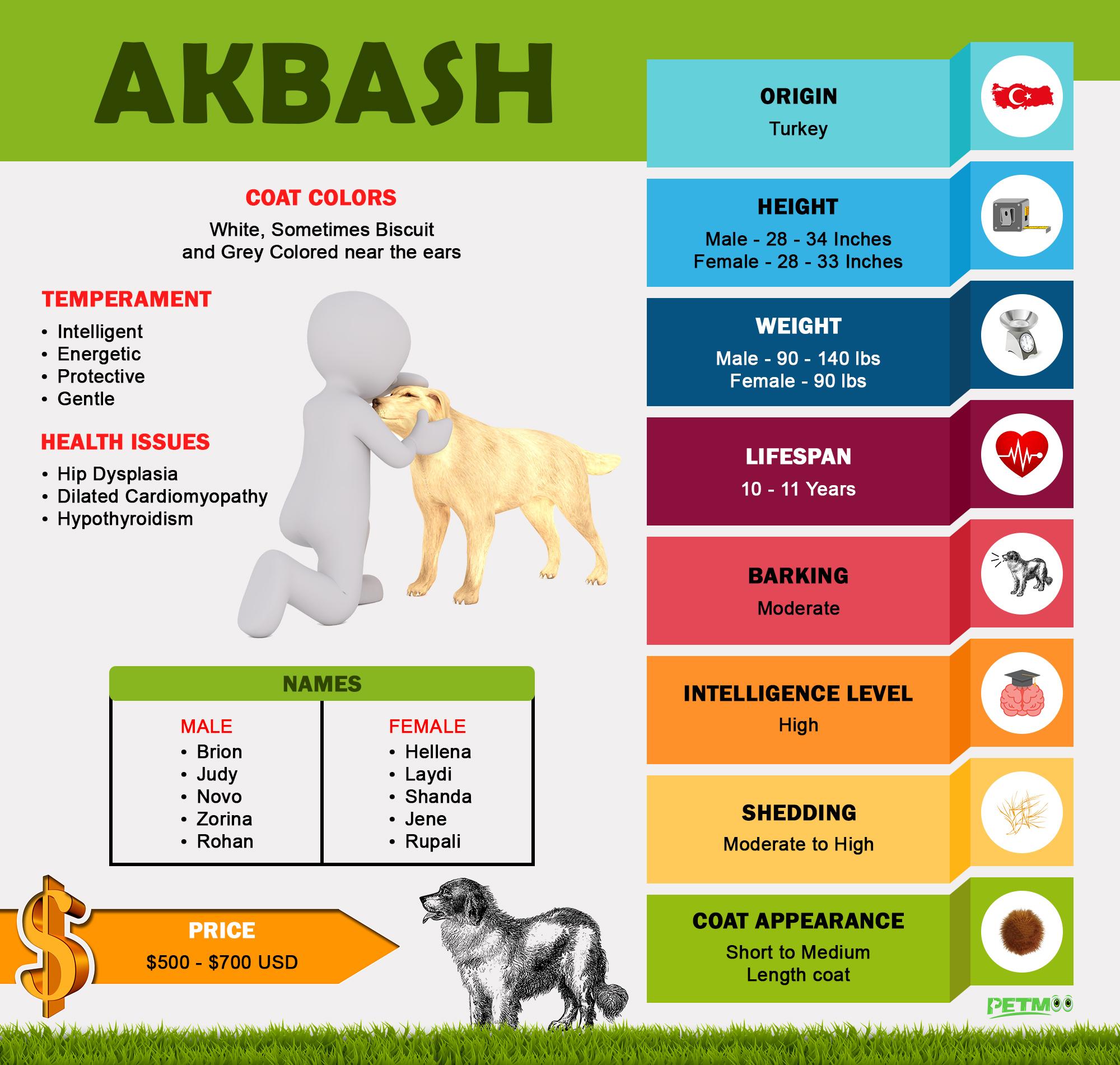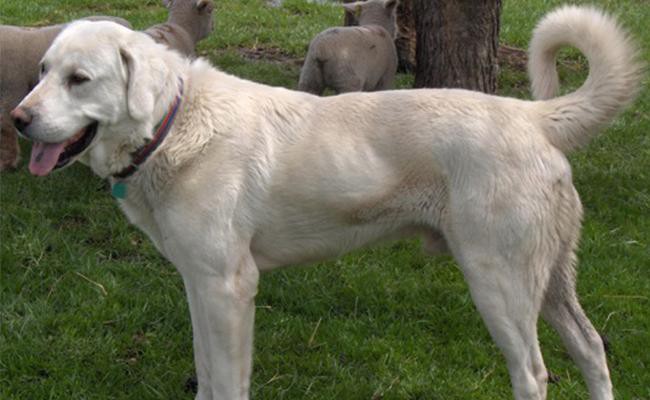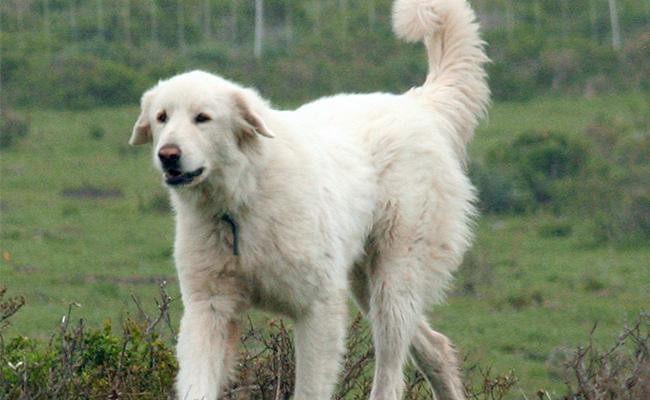Dog Pregnancy Calculator And Timeline
Fiercely independent with protective instincts, Akbash dogs are a highly desired family pet in most countries.
Originally bred in Turkey, they were primarily used as livestock-guarding dogs. As mentioned initially, Akbash dogs are extremely protective owing to which they take their guarding jobs quite seriously.
Acute Hearing and eyesight allow them to be extremely aware of their surroundings.
Their existence dates back as far as 750 to 300 B.C proving them to be quite an old breed. It is reported that many different breed types including mastiffs and sighthounds were also used to breed this new design that gradually gained the name “Akbash”.
Akbash dogs are mostly friendly and they need not be trained extensively to get along with other pets; it is there in their genes to make quick friends with livestock and household pets.
It doesn’t mean you are spared from the effort to train this breed; you got to train them but it would be much easier and fun-filled if you have already done your homework.
Let’s delve into more details about this breed; you will find it useful, especially if you are planning to bring one home.
How To Pronounce Akbash Dog?
Akbash Breed Characteristics Sheet At A Glance
- Origin: Turkey
- Size: Large
- Dog Breed Group: Guardian Breed
- Purebred: Yes
- Lifespan: 10 -11 Years
- Height (at Shoulder): Female – 2.3 to 2.7 ft; Male – 2.3 to 2.8ft
- Weight: Female – 90 lbs; Male – 90 to 140 lbs
- Coat Appearance: Short to Medium Length coat
- Coat Colors: White, Sometimes Biscuit and Grey Colored near the ears
- Temperament: Intelligent, Energetic, Protective, Gentle
- Good With Children: Good with older children; Need training primarily
- Intelligence Level: High
- Good With Pets: No (Only if trained well)
- Hypoallergenic: No
- Grooming: Moderate to High
- Shedding: Moderate to High
- Barking: Moderate
- Suitable For Apartments: High
- Need For Exercise: High
- Easy To Train: Moderate Effort Required
- Good For First Time Owners: No
- Health Issues: Hip Dysplasia, Dilated Cardiomyopathy, Hypothyroidism
- Litter Size: 6-10 Puppies
- Average Price: $500 – $900 USD
Akbash History And Domestication
A native of Turkey, the Akbash dog dates back to 750 to 300 B.C according to the reports.
It is believed that this breed is the Turkish counterpart of other white guardian breeds (such as the Great Pyrenees, the Kuvasz, and the Maremma dog) found in the northern Mediterranean Basin.
Another belief is that this dog was derived from similar breeds in Hungary and Italy.
But, historians identified “Fertile Crescent” as the birthplace of Akbash dog where farming societies first began. So, the exact ancestry of Akbash dog was uncertain.
Although the origin of this breed is uncertain, it is an ancient pure breed. This dog got its name from the Turkish word “akbas,” meaning “white head.”
Why Is Akbash Dog Bred For?
It was initially developed for guarding purposes. The shepherds in the early period were dependent on dogs to assist with the domestication of livestock. They also need dogs that could serve as sentinel.
So, they wanted a white-colored, guarding dog that should be mistaken as a wolf by the hungry predators. But, another theory suggests that white dogs were chosen as they resembled the color of sheep.
The Akbash dogs were also designed to function without human assistance most of the time. It made this breed to be much aware of its surroundings with acute eyesight and hearing.
These dogs migrated to Africa and Europe where many of them were developed into other breeds.
In the 1970s, the Akbash dog was imported to North America. The American and ranchers used this dog to guard their livestock against the coyote. Many of the Akbash dogs also worked assistance and service dogs in the United States.
Kennel Club Recognition
In 1978, the Americans “David” and “Judy Nelson” imported a pregnant female Akbash Dog named “Cybele” to the United States of America.
Their efforts led to the foundation stock for this breed in America and also Canada.
The United Kennel Club recognized this breed on 1 January 1998. In 1980, the US Department of Agriculture introduced these dogs to its Predator Control Program and the dogs performed successfully.
Today, the Akbash dog is registered with the FCI, Turkish Kennel Club, and the Akbash Dogs International.
The outstanding reputation of this breed as a livestock guardian led to the export of this dog from Turkey to other regions around the globe. and they are the national dog of Turkey.
Akbash General Appearance And Physical Characteristics
It is described as a powerful dog breed, sporting spiked collars to protect its neck while fighting with predators. This dog is unique by possessing a combination of Mastiff and Gazehound characteristics.
Features
The Akbash dog has a large head with almond-shaped eyes that are either gold or dark brown in color. Having a strong jaw, its ears are floppy naturally. This dog has a robust body with a short neck.
The tail of this dog will look different as it is not only long and curved but also covered by long, feathered fur. This breed also has thickly padded feet with large, curved toes.
Many of the Akbash dogs are born with double dewclaws on the rear legs, which are similar to Great Pyrenees and Briards. Although this dog appears large in size, it is quick and agile for its size.
They have a slight arch in their back, which gives an indication of their running speed. As this breed is considered to be the combination of Sighthound and Mastiff, its physical traits resemble those dogs.
The Aksbash’s agility and long legs are similar to the Sighhound, whereas its height, power, and the weight came from the Mastiff.
This dog even has the genetic intolerance to barbiturate-based anesthesia like modern-day Sighthounds.
Coat
The Akbash dog has a double coat of short to medium length. The coarse nature of its coat helps the dog to prevent it from matting during exposure to the alpine elements.
Its double-layered coat is water-resistant and protects the dog from getting too cold.
You can see the differences in its coat texture and abundance. Its coat can be wavy with either long or short and smooth hair.
But, the long hair is usually found on the backs of the legs and the tail and the hairs on the ears, muzzle, and paws are shorter than the body coat.
Colors
These dogs are usually white with a touch of “biscuit” color on the head. They also have dark pigment around their eyes, nose, and mouth. Sometimes, you can find light biscuit or gray shading around their ears or in the undercoat.
Gait
You can describe its gait as easy, elastic, and free. The feet travel close to the ground and the legs don’t travel parallel to each other.
Its head is carried low at the level of the shoulders when the dog is excited. But, the Akbash Dog moves with purpose and determination toward the object of interest when it is alert.
Akbash Size And Lifespan
It is a large dog and can stand tall between 28 and 34 inches. They weigh from 80 to 140 pounds. And, males are slightly taller than females.
Akbash Height/Weight
- Height – Female Akbash dogs range between 28 and 33 inches, while the Male counterparts mostly have a height between 28 and 34 inches.
- Weight – Females weigh around 90 lbs and male’s weight would range between 90 and 140 lbs.
Akbash Lifespan
The average life expectancy of an Akbash dog breed is 10 to 11 years.
Aging is a continuous procedure; you cannot stop it but you can keep your dog healthy throughout these years and help them live a fit and happy life.
Akbash Temperament
Akbash Dogs are very loyal and they display a great deal of love and protectiveness towards their family, inclusive of all pets in the household.
They are aggressive towards strangers and do not get along well with other dogs unless they are part of the family.
As pups, they are huge, strong and very rough during playtime; you cannot expect them to be an incarnation of a sweet, cuddly stuffed pooch.
Personality Traits
- Barking Levels: High
- Drooling Tendency: Low
- Tendency to Snore: Low
- Social/Attention Needs: Moderate
Living with an Akbash Dog
Every dog owner should know little information about their living with a dog. This information is helpful for the canine owners to know about the dog’s requirements.
This breed is highly intelligent and smart and knows very well when to back out of a fight; this presence of mind allows them to avoid becoming dinner to a pack of wolves.
Does Akbash Suit Only for Experienced Owners?
Yes. This breed won’t suit for first-time owners as it requires more training and socialization from day 1. Almost all large livestock guardian breeds need training and socialization from a young age.
This breed also requires a firm, kind, and consistent owner. Also, this dog will mature slowly and the Akbash pups can do a great deal of damage by chewing on anything until they are mature enough to stay calm.
They get bored very easily and can turn destructive if left unattended. Once they reach adulthood, calm nature and responsibility sets in naturally into this dog breed.
Are they good with Children?
Yes. But, the Akbash dog is not the right breed for small children due to its size. They love to grab every little object with their teeth while playing.
So, do not leave them alone to play with kids. But, an adult Akbash dog is much composed compared to the little ones.
Are they good with other Dogs?
No. They do not get along well with other dogs unless they are part of the family. So, exposing this breed to other dogs is crucial as they are naturally aggressive toward dogs they don’t even know.
Can They Just be Companions?
No. Apart from serving as cool human companions, they are excellent guardians. They are great watchdogs, too!
You can leave them alone to watch over your house and livestock even during night times. Akbash would stand between you and danger if at all a grievous situation arises.
What About Visitors?
The Akbash dog is a great companion dog. It is gentle and affectionate with its humans. But, they are aggressive towards strangers.
Akbash Health Concerns
Even if a breeder promises that the dog is 100% free from health issues, the claim cannot be believed blindly.
Just like humans, all dogs are susceptible to health problems either due to environmental conditions or genetic disorders.
Generally, Akbash dog breeds face orthopedic problems like hip dysplasia, heart ailments like dilated cardiomyopathy and sometimes hypothyroidism.
Hip Dysplasia in dogs is very common and affects all types of breeds irrespective of type, size, and color.
Deformed ball and knee socket can lead to this condition when continuous rough-sliding leads to gradual rupture.
This condition can cause extreme pain and discomfort to the pet if left unattended in the early stages. Decreased activity and a swaying gait are the primary symptoms of hip dysplasia.
Canine Dilated Cardiomyopathy can be a result of numerous reasons including nutritional imbalance, infections or genetic problems.
This condition makes it difficult for the heart to generate pressure and pump blood through the vascular veins.
Lethargy, weakness and also weight loss are the common symptoms of this health condition. Early treatment can help keep the ailment under control.
Hypothyroidism commonly affects middle-aged dogs owing to hormone imbalance and in some rare case, the pups inherit this problem from its parents.
Mental dullness, cold intolerance, obesity are a few symptoms that indicate the onset of this health issue.
Immediate treatment is important in such cases in order to avoid your pet from becoming host to a multitude of other debilitating diseases.
Akbash Training
You first need to understand their temperament quite clearly prior to preparing a training schedule. Each dog is different and so is its training and exercise requirement.
They are very aggressive towards people and pets that are not a part of the family; hence socializing should be imparted at a very early stage.
- Exercise Requirements: 20-40 minutes/day
- Energy Level: Average
- Longevity Range: 9 – 11
- Tendency to Dig: Moderate
You must help them differentiate between friends and foes. In order to do so, you must start training them right from day 1 when you bring him home.
They are athletic dogs and tend to break fences and run around; if you want to keep your Akbash composed and within boundaries, then you must correct him continually until it becomes an involuntary habit.
The next step you must take is to teach him to obey basic commands like, come, sit, eat, etc. Praise your pet when he achieves something and does not back away from punishing him if he does something wrong.
Finally, it would be best if you buy the pet from a reputable breeder; most professional breeders give basic training to the pups once they start walking.
Akbash Food
Akbash is a large-breed dog, so the food you buy must be particularly formulated to meet the energy requirements of this breed type.
There is no predefined quantity to feed the dog; keep a check on its habits and adjust the quantity accordingly.
To start with, 2 – 2.5 cups of dog food would be enough; you can increase or decrease based on your pet’s intake.
But ensure to keep their weight stable; becoming overweight or extremely lean is not good for the pet’s health.
Akbash Shedding And Grooming
Akbash has short to medium-length double coat with a long tail that is heavily feathered and curly.
They are mostly white-colored except in certain cases where you may notice light biscuit or gray shades around it ears. You need to brush them at least once a week in order to avoid excessive shedding.
Akbash Puppies Care
As mentioned in the earlier section, brush their hair at least once a week. Give them a bath as soon as you notice their coat getting dirt; don’t wait for the coat to become greasy with dirt.
Other basic care includes trimming the nails as required and frequent brushing of teeth. Always ask a vet to prescribe a toothpaste name and stick to the brand if you want to avoid unnecessary oral health issues.
Take them to the vet for regular medical health check-up and get all the necessary vaccinations administered to your pet.
Interesting Facts
- The United Kennel Club recognized this breed in 1998.
- Akbash dog got its name from the Turkish term “Akbas” which means the “White Head”; the name justifies the coat color.
- The Anatolian Shepherd dog is a mix of Kangal and Akbash Dogs.
- This breed became popular in the United States when 2 Americans David and Judy Nelson grew interested in the breed and decided to introduce them, in the year 1970.
Akbash Puppies Names
Want to name the Akbash dog? You can find a lot of names in plenty of ways.
But, you can find unique names in some ways. For example, consider its origin and find some good Turkish names. If you feel that the Turkish names can be hard to pronounce, find a name that fits your dog’s personality.
The best way to find an apt name for your puppy is to have a list of names that you find interesting for it. Then, have a discussion with your family members and finally decide a name that everybody agrees.
In addition, always keep in mind not to choose a similar-sounding name. This will avoid confusion when you visit the dog park or when take your dog for walking in the neighborhood.
But, finding the right name may take a while!
Akbash Male Puppy Names
- Brion
- Judy
- Novo
- Zorina
- Rohan
- Agen
- Rima
- Iris
- Collen
- Tedda
Akbash Female Puppy Names
- Hellena
- Laydi
- Shanda
- Jene
- Rupali
- Ashlee
- Zipper
- Supriya
- Pippy
- Neka
Akbash Dog Breeders And Price
Akbash pups cost approximately $500 to $900.
Some breeders may demand extra for vaccinations given and medical tests taken, but this factor varies from breeder to breeder.
How to Find Reputable Akbash Breeders?
Breeders of Akbash ought to be a part of a reputed dog club and must be engaged in breeding just a particular type of dog.
Most breeders interview buyers in order to investigate if the environment would be comfortable for his dogs.
You can trust such breeders since their inquisitiveness displays the concern they have towards their pups.
Most importantly, avoid purchasing from breeders who exercise high sales tactics. You can ask questions and demand for medical test papers of hip evaluations and other common genetic health issues.
A good and reliable breeder will never hide any important information about his dogs and will also be willing to offer all the help possible to choose the right pup.
Akbash FAQs
1. How Big is a Full-Grown Akbash?
A full-grown Akbash dog will look large and stand anywhere between 28 and 34 inches. Male Akbash dogs usually grow up to 34 inches and weigh around 90 to 130 lbs. And, the females can grow between28 and 32 inches and weigh around 140 lbs.
2. What is the Life Expectancy of the Akbash?
Overall, the Akbash dog is a healthy breed and is mostly free from major health issues. It has quite a long life and lives for about 11 years.
3. How Much Exercise Does an Akbash Need?
The Akbash Dog is a working breed, bred for guarding purposes. So, they are active and agile and needs daily walks for at least half an hour.






















